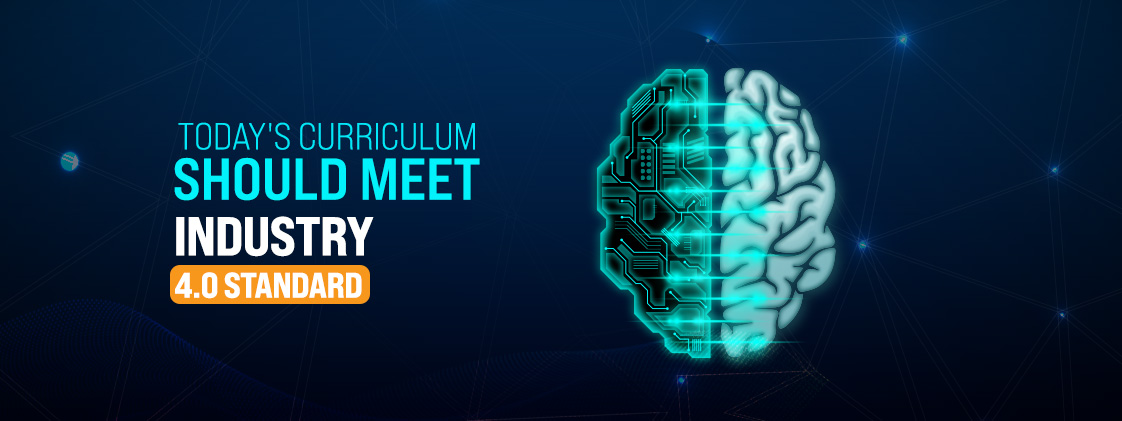Education is one of the most important aspects of human life. As new technologies evolve, traditional educational methods are being challenged. The way the knowledge is conveyed to students must meet the demands of the modern world. Today’s curriculum must align with the standards of Industry 4.0 to prepare students for a successful future.
Table of Contents:
Understanding Industry 4.0: The New Educational Imperative
Why This Matters for Students
Why the Traditional Curriculum Is No Longer Enough
What an Industry 4.0-Aligned Curriculum Looks Like
Technology Use in All Subjects
Learning by Doing
Digital Skills as a Must-Have
Teamwork Across Different Subjects
Ongoing Feedback and Assessment
Future Considerations
Conclusion
FAQs
Understanding Industry 4.0: The New Educational Imperative
"Industry 4.0" refers to the integration of the latest technologies, including big data, cloud computing, robotics, artificial intelligence, machine learning, and the Internet of Things (IoT), into the business, service, and industrial sectors. It marks the beginning of an era of intelligent automation, real-time data processing, and networked systems where humans and machines work together in complex and intricate ways.
Why This Matters for Students
Is my education helping you prepare for a successful future? It is the question every student must ask themselves. If your curriculum doesn’t meet the 4.0 standard, you are unprepared to compete in a highly competitive world. It is because your education won’t extend beyond the classroom. However, 4.0-aligned standards allow you to gain transferable skills that can be used in real-world situations.
Why the Traditional Curriculum Is No Longer Enough
The routine of students has been going to institutions, attending lectures, having canteen food, and going back home for decades. They do the assignment and study for the exam a few days before. This traditional education is based on memorization and is outdated in the Industry 4.0 context. Employers don’t look for a strong degree; they search for competencies. They are looking for graduates with the ability to cooperate across disciplines, handle digital tools, evaluate data, and think critically.
Unaligned with Industry 4.0, a curriculum does not:
- Equip students with practical digital skills.
- Encourage innovation or interdisciplinary learning.
- Teach data interpretation and tech-based decision-making.
- Offer exposure to real-time business challenges.
What an Industry 4.0-Aligned Curriculum Looks Like
Modern education must reflect how industries now work to stay relevant in today’s automated and connected world. A future-ready curriculum should include:
Technology Use in All Subjects
No matter what field students are in—business, IT, healthcare, or management—they should know how to use digital tools. This includes communication apps, data tools, and cloud platforms.
Learning by Doing
Hands-on experiences like internships, real-world projects, and simulations should support classroom learning. Students need to practice solving real problems, not just study them.
Digital Skills as a Must-Have
Every course should teach basic knowledge of key areas like automation, cybersecurity, data science, and artificial intelligence.
Teamwork Across Different Subjects
Modern workplaces rely on teamwork and mixing ideas from different areas. Schools should encourage group projects that blend creativity, business, and technology.
Ongoing Feedback and Assessment
Students should be assessed regularly through practical tasks instead of relying on just a few big exams. Like in Industry 4.0, feedback should be fast and frequent to help improve learning.
Future Considerations
Presidential Graduate School (PGS) is shaping education for the future. With a strong focus on Industry 4.0, we blend business education with data science, AI, and modern IT practices. Students learn in smart classrooms and virtual labs that reflect real industry settings. The experienced faculty connects theory with practical insights, while internships and live projects ensure hands-on experience. By focusing on future-ready skills, digital literacy, and innovation, our graduates are academically qualified and equipped to thrive in the global, tech-driven job market of tomorrow.
Conclusion
A person spends lakhs of money during their student years, but what if it doesn’t return the value? So, be clever; don’t go behind the traditional teaching method. In such a case, you can trust PGS because the curriculum meets the 4.0 standard. Our course includes IT, cybersecurity, business, and data analytics, and each aligns with global standards and holds TU equivalency. This means you are in equal demand at national and international borders.
FAQs
1. What do you mean by Industry 4.0, and why is it cruical?
Industry 4.0 refers to the shift from traditional processes to advanced digital systems by using cutting-edge technologies like the Internet of Things (IoT), artificial intelligence (AI), machine learning, and big data. It helps boost efficiency, ensures better quality control, lowers costs, and drives innovation.
2. What are the 6 key areas where Industry 4.0 is applied today?
Today, the 6 main applications of Industry 4.0 are as given below:
- Personalized Learning using AI
- Virtual and Augmented Reality (VR/AR) for immersive learning
- Data analytics for student performance tracking
- Online and Remote Learning Platforms
- Smart Manufacturing
- Predictive Maintenance
3. How can I implement Industry 4.0 in my organization?
To implement Industry 4.0 in your organization, assess current processes, set clear goals, adopt smart technologies, train your team, ensure cybersecurity, start small, and scale gradually based on real-time insights.

